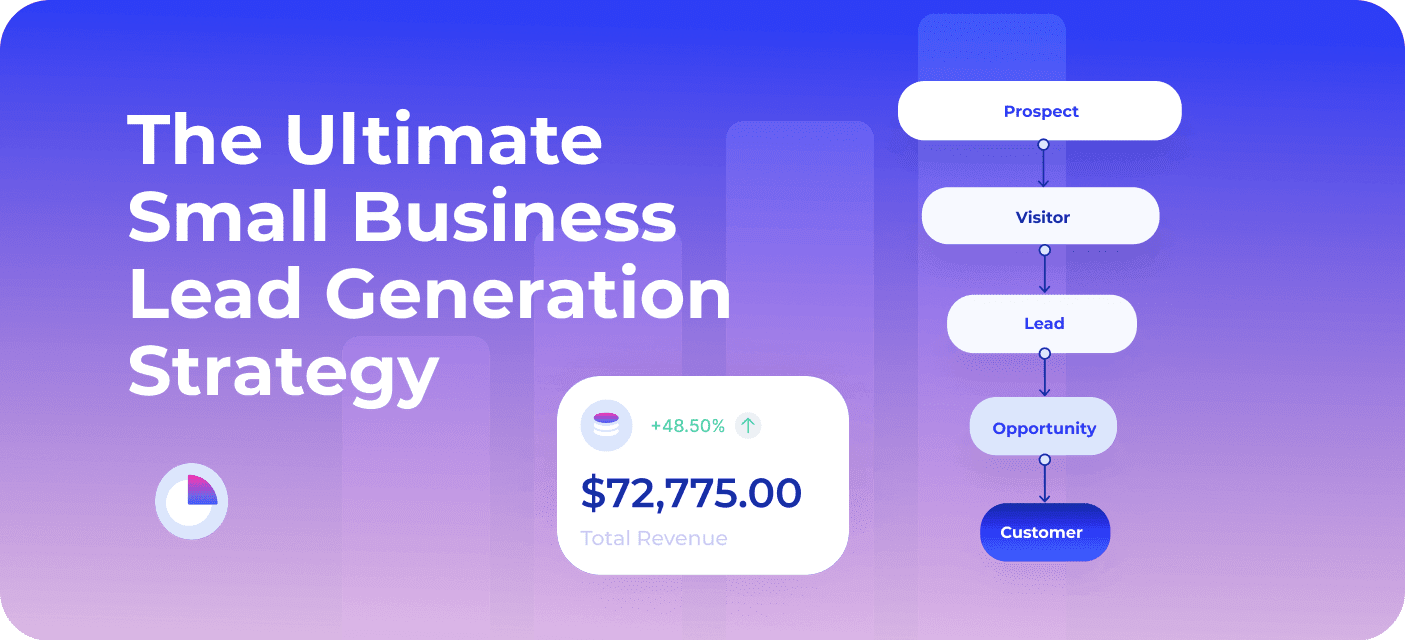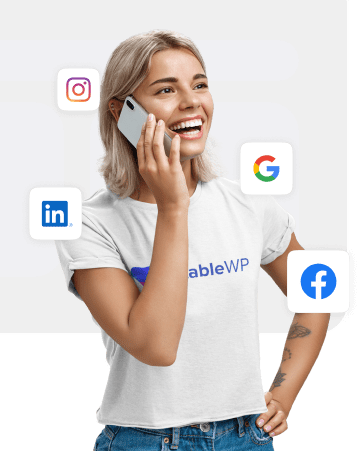However, attracting high-quality leads is never a straightforward effort. It takes a lot of planning, testing, and adapting to get a positive return on investment.
The good news is that with the right strategy, you can build a lead generation powerhouse, consistently bringing in revenue.
In this blog post, you’ll learn the ultimate small business lead generation strategy with actionable tips to help you attract more leads, fill your sales pipeline, and ultimately drive growth for your business.
Table of Contents
The ultimate lead generation strategy for small businesses
The ultimate lead generation strategy for small businesses includes attracting the right visitors to your website or landing page, converting that traffic into qualified leads, and finally nurturing them until they become paying customers. It involves a variety of tactics and channels, such as paid advertising (PPC), SEO (search engine optimization), content marketing, social media, email marketing and even cold outreach.
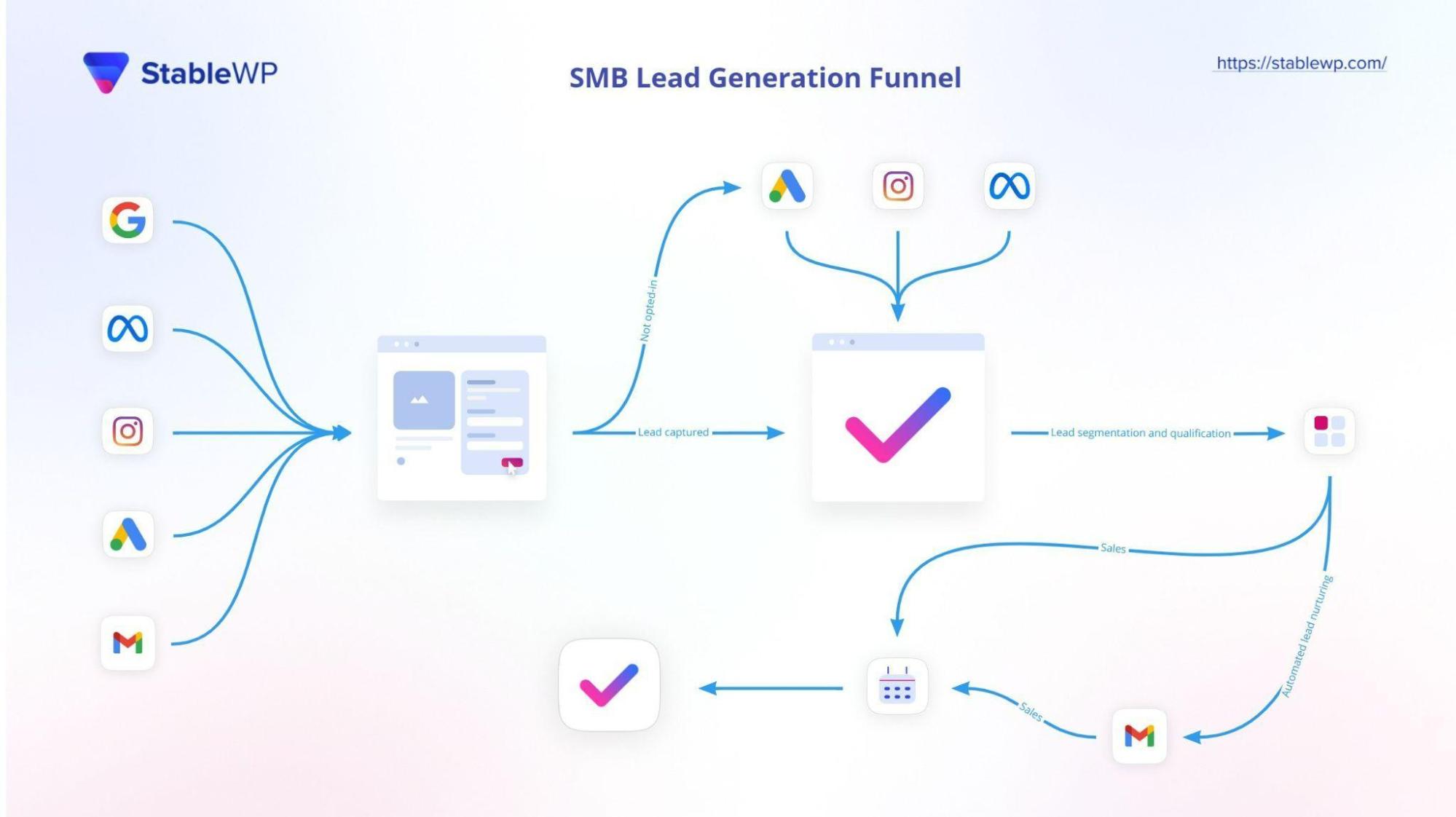
The main components of a small business lead generation strategy include:
- Attracting the right traffic
- Creating an omnichannel funnel
- Converting traffic into leads
- Transforming leads into sales
- Supplementing your lead generation with cold outreach
- Raising awareness with social media
The end goal is to transform online visitors into qualified leads – people who fit your targeting criteria and are “warm” enough to be moved down your sales funnel.
Step 1: Attract the right traffic
Attracting the right website traffic is essential for small business lead generation because it directly impacts the volume and quality of your leads. Ultimately, it’s also essential for the success of your overall marketing strategy.
Here’s why attracting the right traffic is so important:
- More qualified leads: Driving the right traffic means attracting visitors who are more likely to be interested in your products or services.This results in a higher volume of qualified leads, which are easier to convert into paying customers.
- Increased conversion rates: When you attract the right traffic, your conversion rates will naturally be higher. This is because visitors interested in your products or services are more likely to take action, such as filling out a contact form or requesting a quote.
- Cost-effective marketing: With more leads and a higher conversion rate, your marketing efforts will be more cost-effective. By converting more traffic into leads, you’ll be able to reduce your cost per lead (CPL). And by converting more leads into customers, you’ll be able to reduce your customer acquisition costs (CAC).
- Higher return on investment (ROI): Attracting the right traffic means getting a better return on investment (ROI). This is because you’ll be able to generate more leads and close more sales at a lower cost, making every $$$ you invest in marketing more effective, ultimately driving growth for your business.
To attract high-quality targeted traffic at scale, you can use a combination of strategies. The most effective are Google Ads, Facebook Ads and SEO (search engine optimization).
Run targeted Google Ads
Google Ads are an indispensable part of your lead generation strategy as you can reach potential customers at the right moment when they’re actively searching for your products or services.
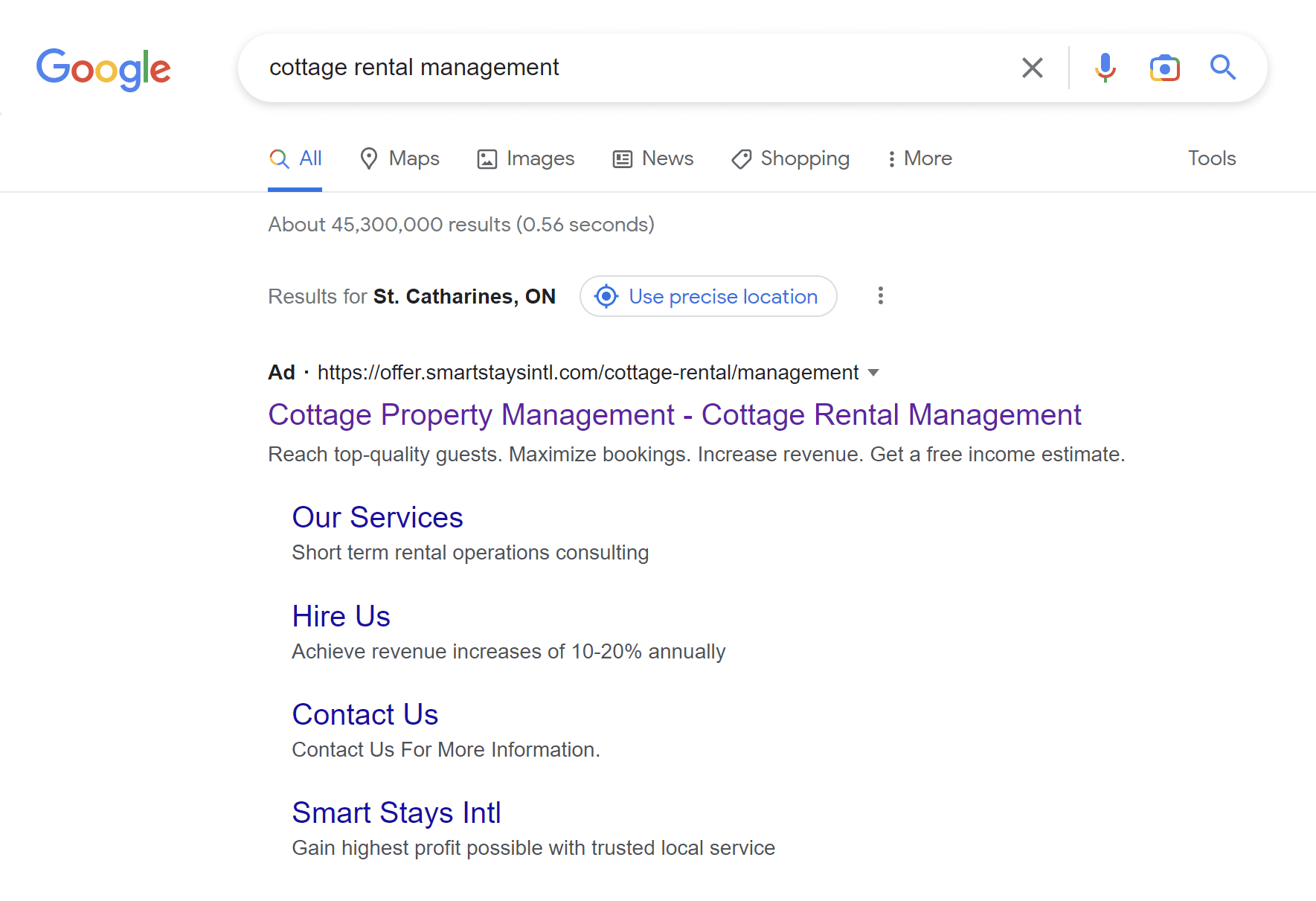
With Google Ads, you can target specific keywords. It essentially allows you to reach prospects with a strong buying intent based on what they search for on Google.
When a person searches for something related to your business, your ad will appear at the top of the search results, increasing visibility and driving traffic to your site.
To attract the right traffic, focus on targeting relevant keywords with high buying intent.
These can be related to your business, specific services or products, or your (or your competitors’) brand.
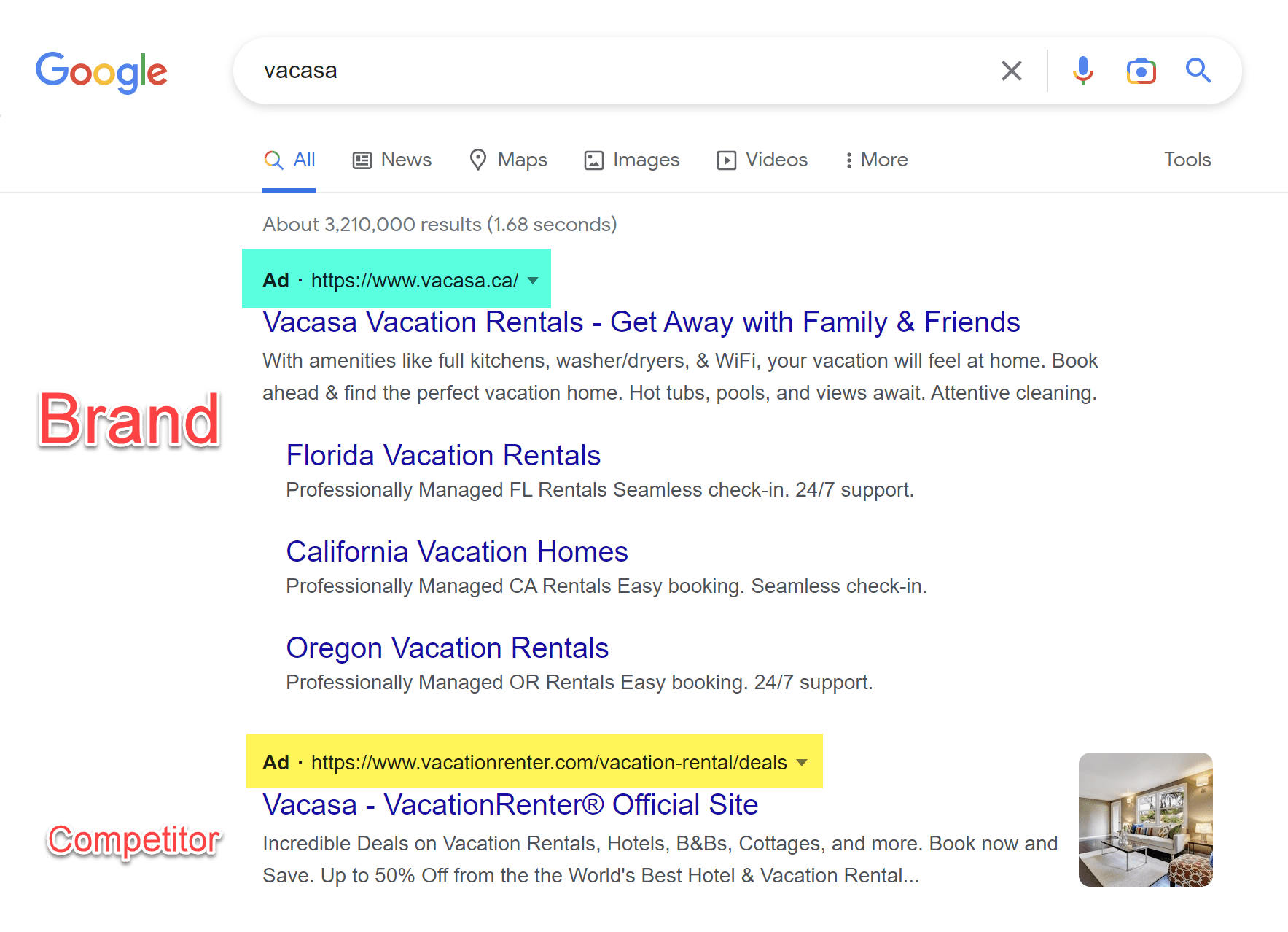
Ad copy is also critical to your Google Ads success. You need to write keyword-rich copy that highlights your unique selling point and gives a strong reason for users to click on your ad.
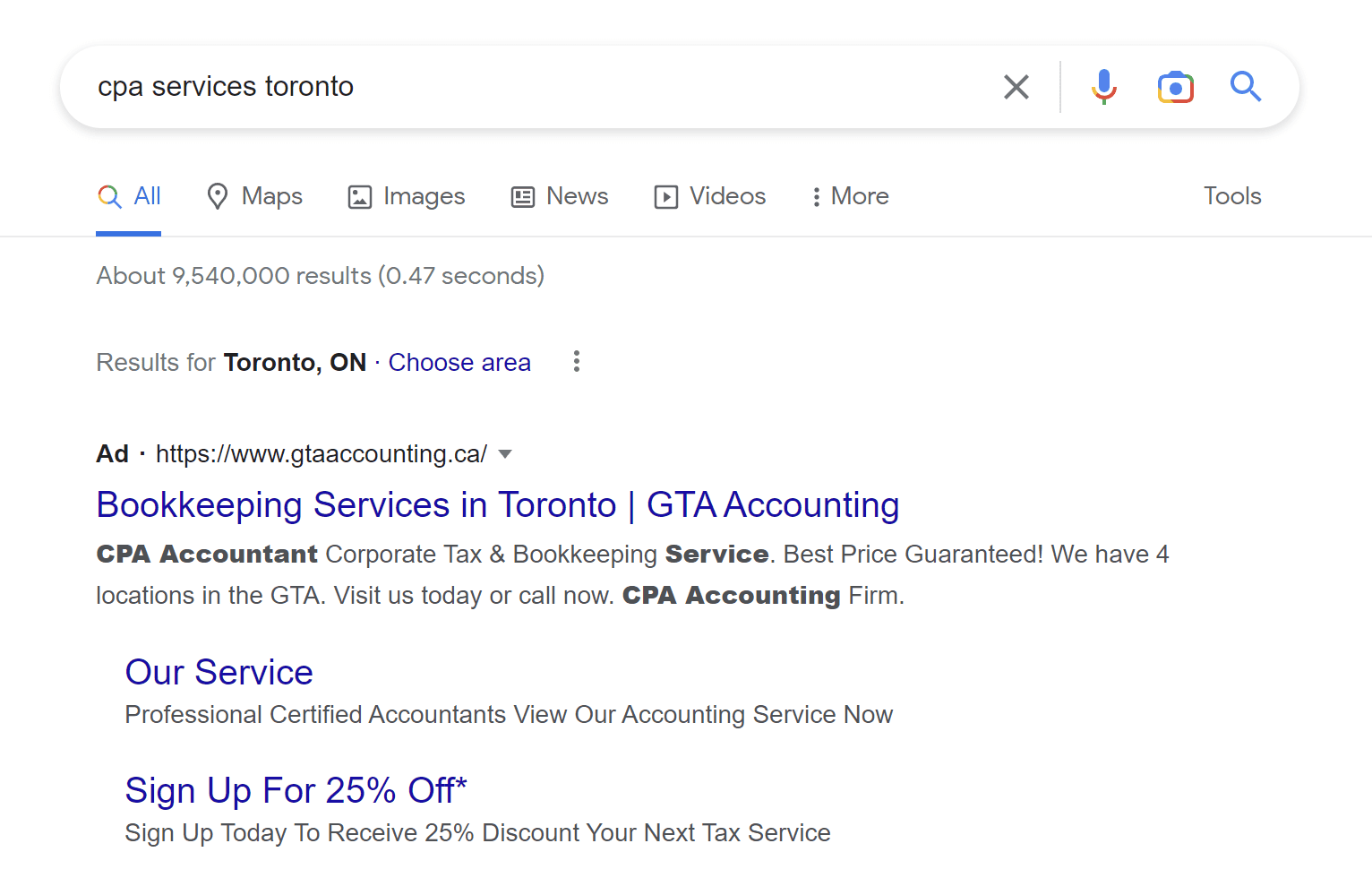
A major advantage of Google Ads is that since you can reach users with a high buying intent, the results are near instant.
However, be mindful that for some industries and keywords, the average cost-per-click can be high due to fierce competition. To make the most of this without breaking the bank, it’s best to combine Google Ads with ad campaigns on Facebook.
Harness the power of Facebook Ads
Facebook Ads is a powerful advertising platform that allows you to generate leads through Facebook and Instagram. You can target specific demographics, interests, behaviours, and more to reach a highly targeted audience that is more likely to be interested in your products or services.
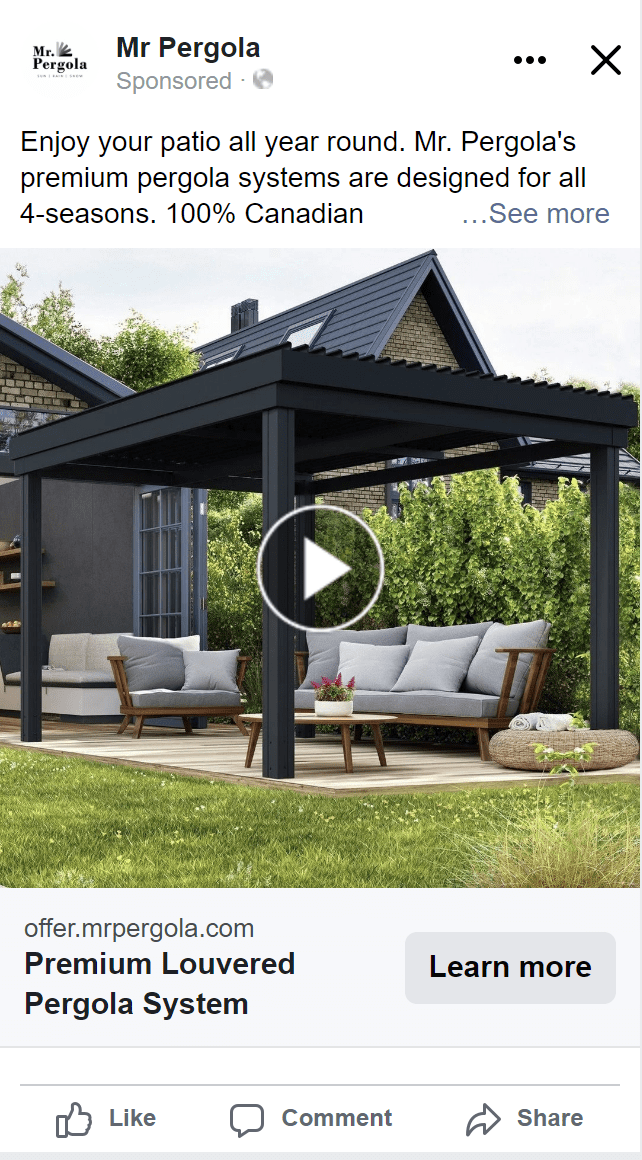
An important “superpower” of Facebook Ads is the ability to use so-called Lookalike audiences. This option helps you reach people who share similar characteristics to your existing customers, which makes them likely to be interested in your products or services.
To attract the right traffic, create eye-catching ad visuals and compelling ad copy that speaks directly to your target audience.
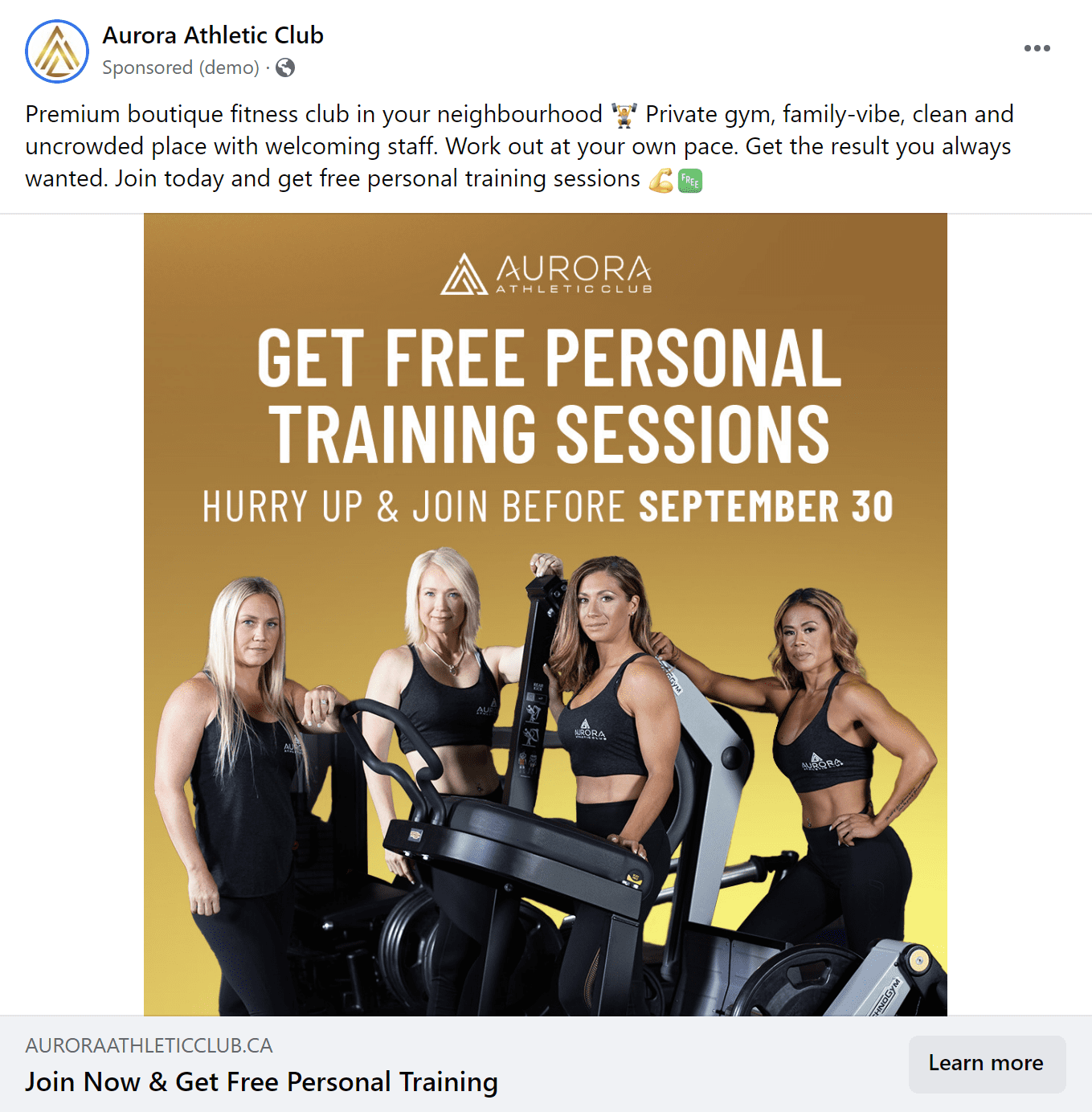
On Facebook, you can also benefit from relatively lower cost-per-click, which is important for lead generation. This allows you to generate leads at a much lower cost compared to other paid marketing channels.

Get long-term results with SEO
SEO is an essential component of your small business lead generation strategy. By optimizing your website and content, you can increase visibility, attract targeted traffic, and generate high-quality leads for your business over the long term.
SEO helps increase the visibility of your website in search engine results (SERP), making it easier for potential customers to find you when they search for keywords related to your business.
The higher your website ranks, the more likely potential customers are to visit your site, increasing the chances of generating leads.
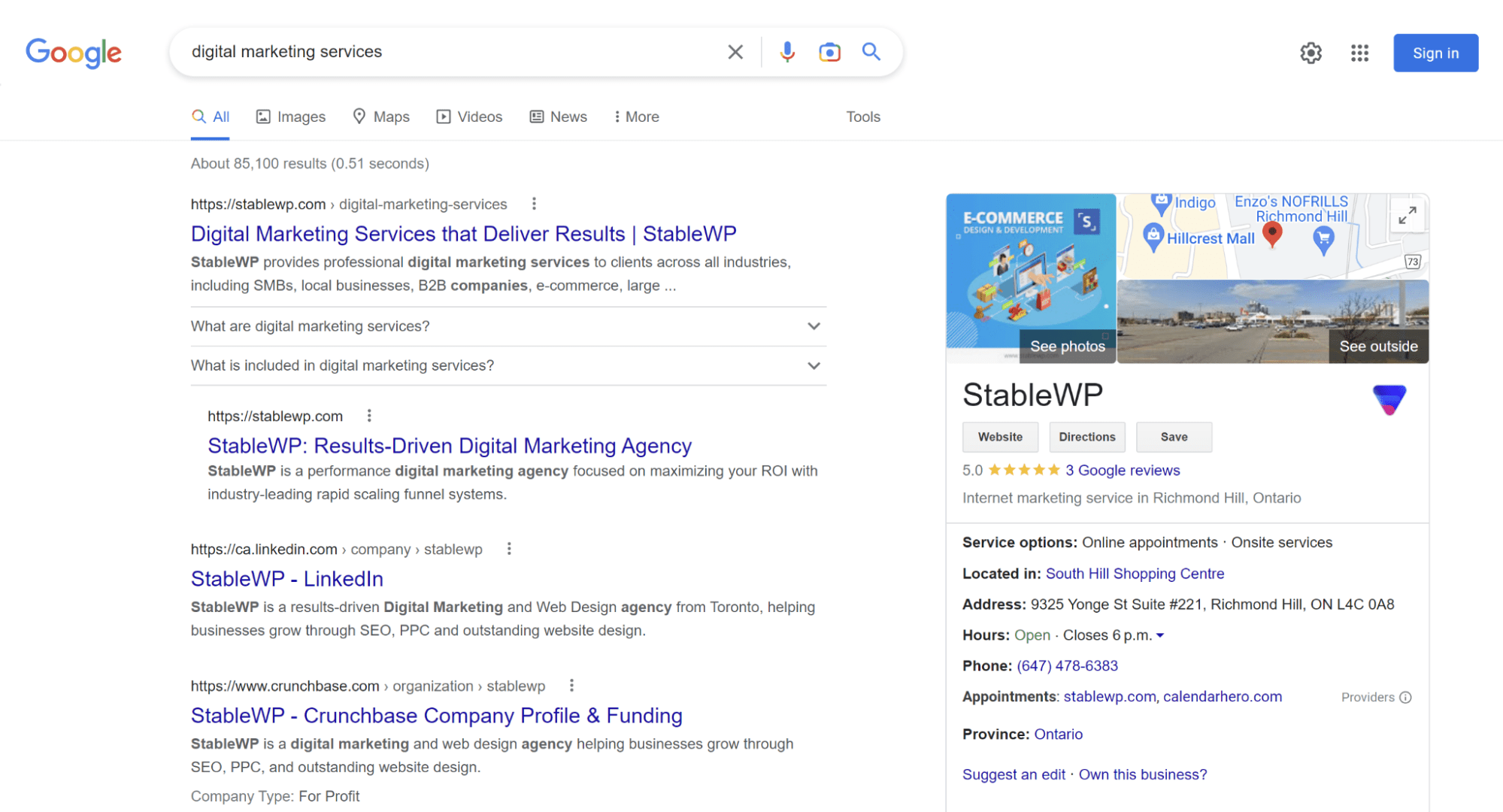
A major advantage of SEO is that it’s a long-term strategy. Unlike paid advertising, the results of SEO are long-lasting.
Once you’ve optimized your website and content, your site will continue to rank high in search results, providing a consistent stream of organic traffic and leads over time at no extra cost.

It’s important to point out that even though SEO delivers great results over time and drives a high ROI, there’s still one key drawback: it can take some time to start ranking and generating results from SEO.
However, with the right SEO strategy and help from an experienced professional team, your site can rank fast, regardless of your niche.
Finally, good SEO practices also result in a better user experience, which is important for lead generation. This includes a fast-loading website, easy-to-use navigation, and high-quality, informative content. When potential customers have a positive experience on your site, they are more likely to become leads.
Step 2: Set up an omnichannel funnel system
An omnichannel approach can greatly enhance your small business lead generation strategy. By leveraging multiple channels and touchpoints, an omnichannel strategy allows you to reach potential customers throughout their entire “buyer’s journey,” increasing your chances of generating qualified leads at scale.
Even though each channel is powerful on its own (Google Ads, Facebook Ads, SEO, social media, etc.), it’s only when they’re combined that you can maximize the reach and potential of your lead generation campaigns.
The digital era has brought along significant changes in consumer behaviour. Nowadays, about 90% of people use various devices and platforms for getting inspired, collecting information, communicating and shopping throughout the day.
A potential customer who landed on your website on a desktop computer might inquire about your offers later on Instagram using a smartphone. An omnichannel funnel is critical to reaching prospects and capturing leads across multiple platforms and devices.
An omnichannel approach allows you to initiate contact with top-of-the-funnel prospects at the beginning of their journey.
For example, this journey can start on Instagram when a potential customer gets inspired by your home renovation ad.
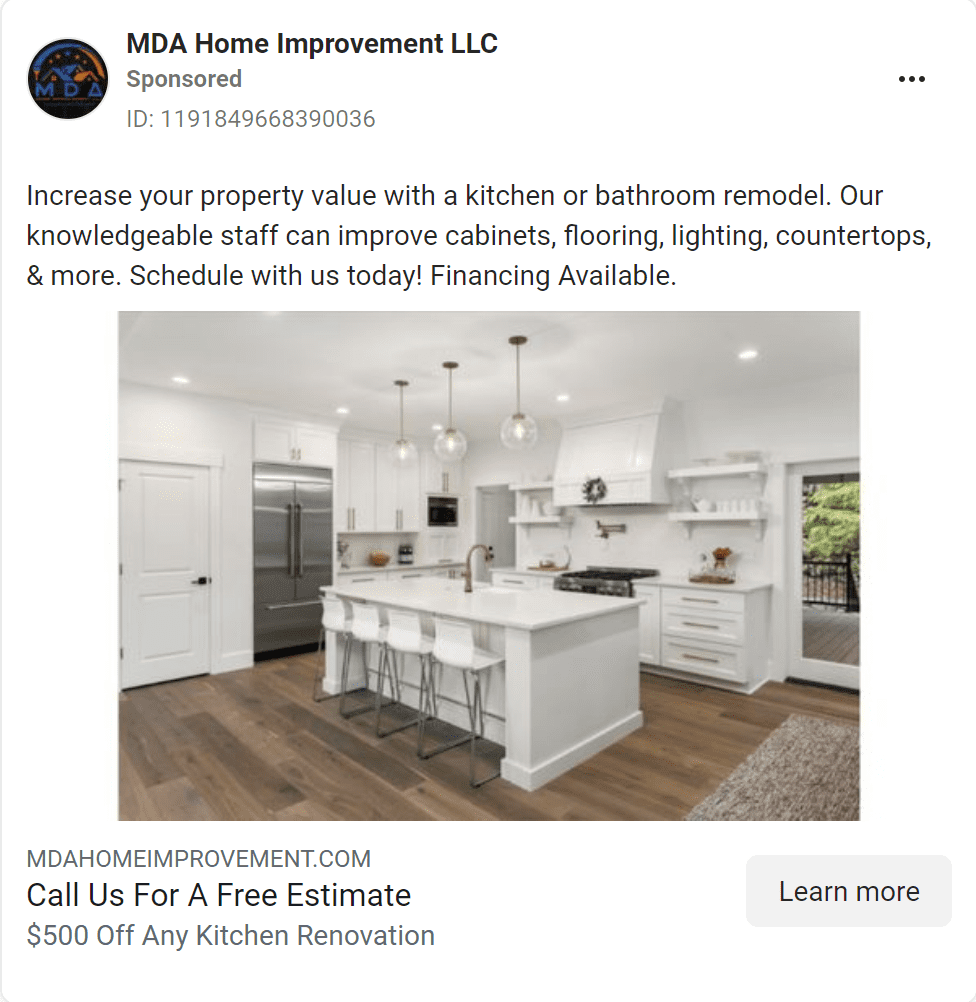
As a prospect becomes more interested (problem-aware), they are likely going to perform a search on Google on how to get started.
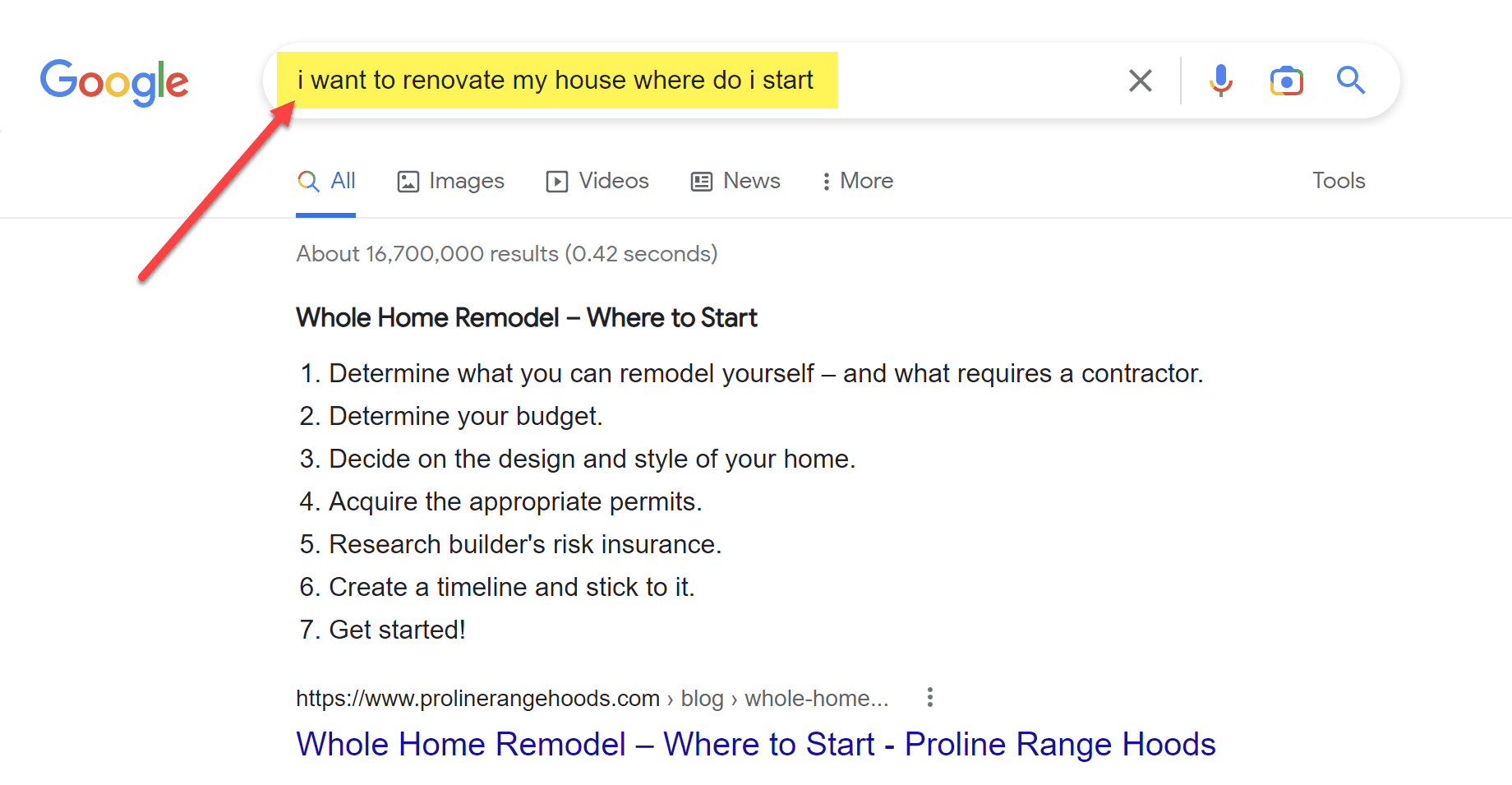
SEO and content marketing, as well as Facebook Ads, can be great for the top-of-the-funnel stage.
As prospects become familiar with what they need (solution aware), they’ll start actively searching for a solution. This is when you can leverage Google Ads and SEO to capture that demand.
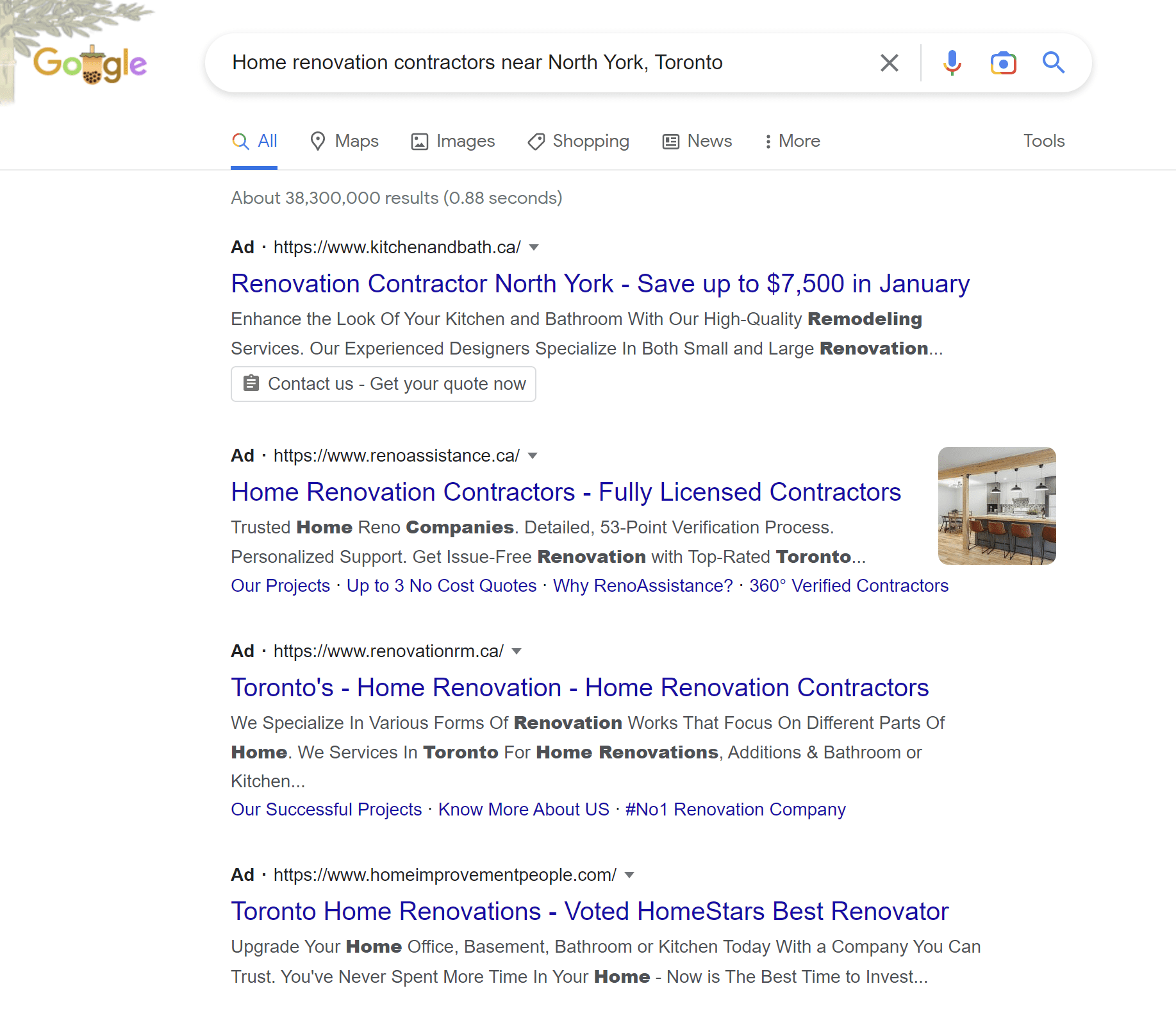
With an even better understanding of their options, prospects will start comparing alternatives.
Prospects interested in your services may start searching and comparing quotes. You can seize that momentum with targeted Google Ads, offering a free cost estimate.
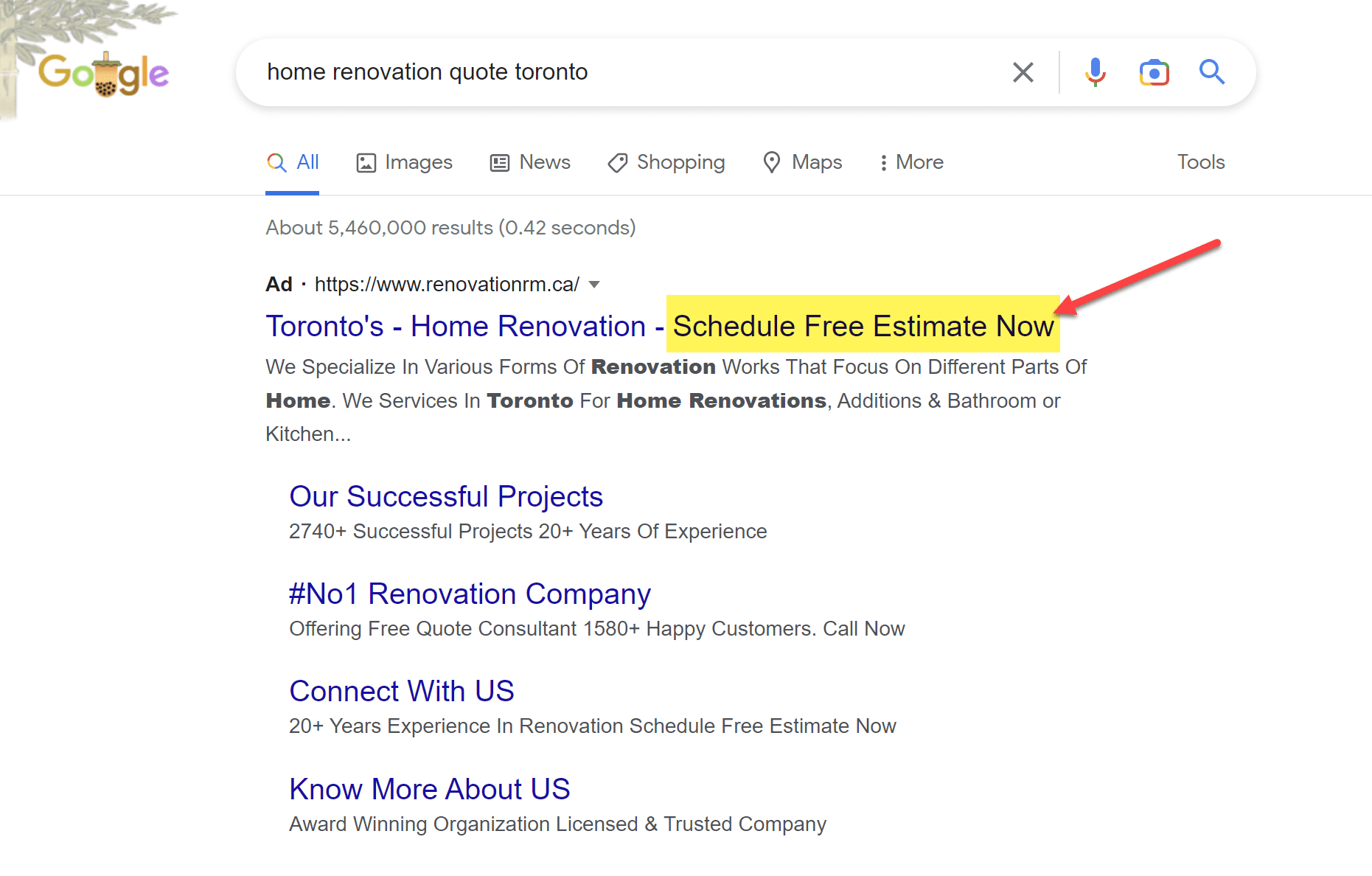
To maximize the effectiveness of your campaigns, run remarketing ads on Facebook, Instagram and Google to convert anyone who previously visited your site but didn’t become a lead.
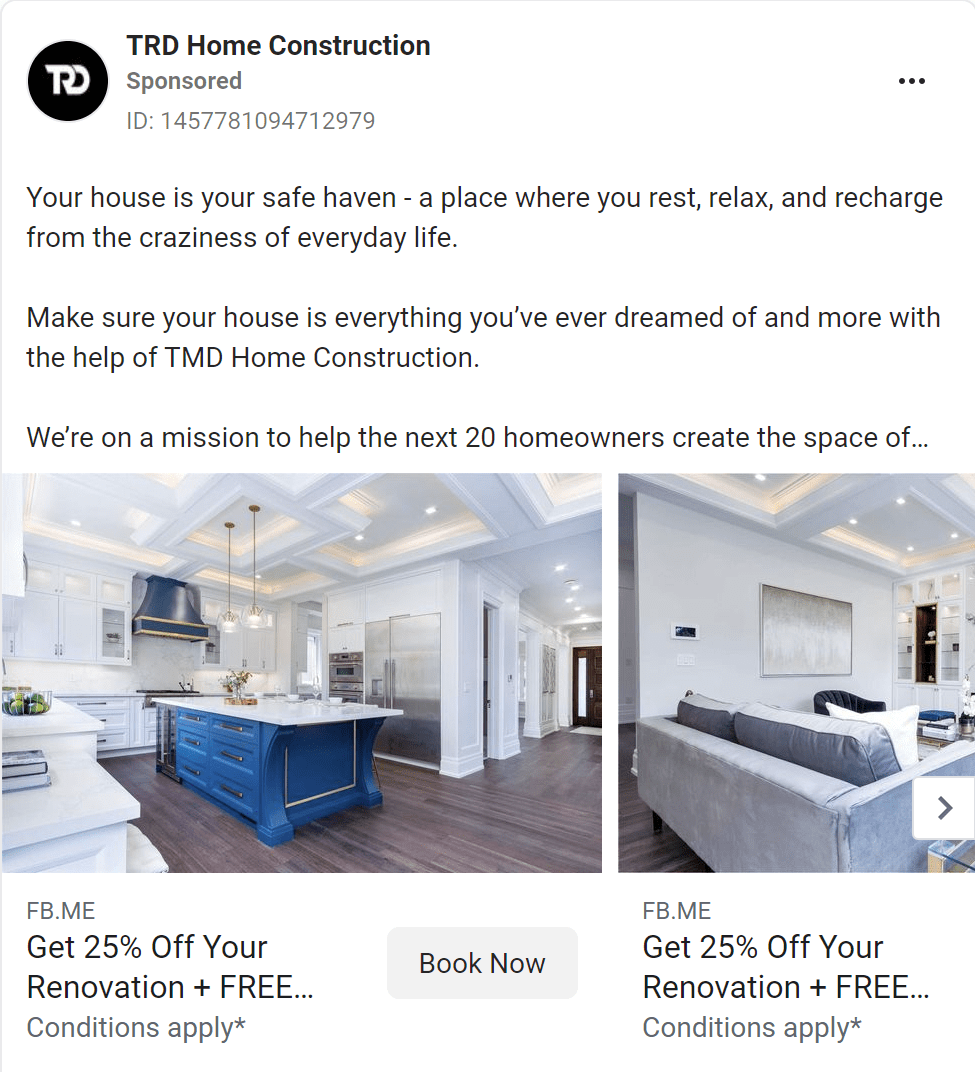
For a small business looking to cut through the noise in a competitive industry and boost sales, accounting for online user behaviour is vital.
Our tests show that companies that use three or more marketing channels get up to 450% more qualified leads than those bound to a single channel.
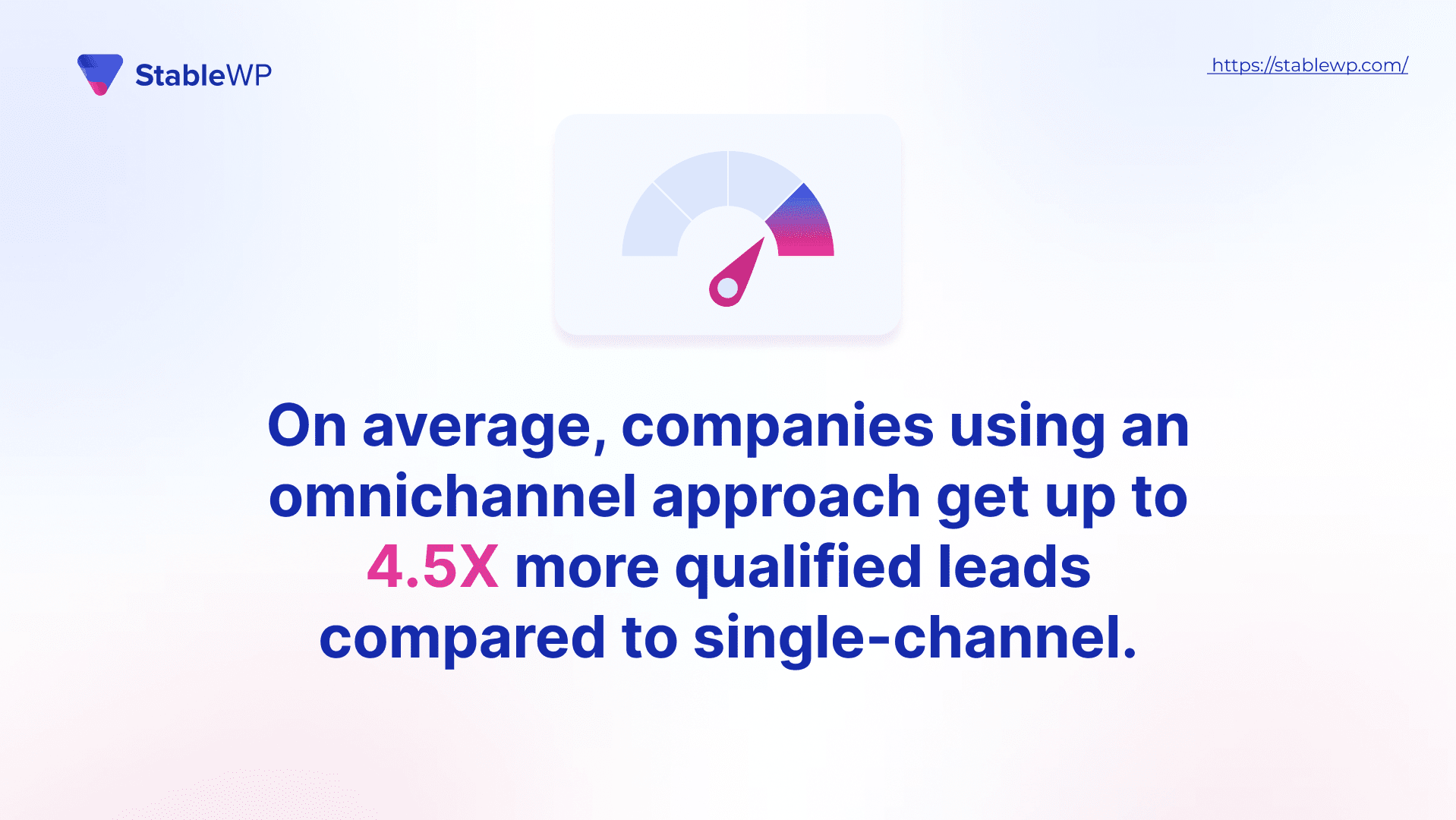
Omnichannel funnel building is, therefore, more than a preferred lead generation practice. It’s a core necessity for any small business that seeks to improve sales and keep competition at bay.
An omnichannel strategy enhances lead generation by providing a consistent brand experience across multiple channels, reaching a wider audience and personalizing marketing efforts for higher engagement and conversion rates.
This approach also improves lead nurturing by giving a complete picture of each lead’s interactions and enabling targeted campaigns to move them down the sales funnel.
Step 3: Convert website traffic into qualified leads
Converting online traffic into leads is an essential step in the lead generation process for small businesses. The conversion process requires a combination of compelling offers, easy-to-use opt-in forms, optimized landing pages, and effective tracking and analysis.
Offer a compelling lead magnet
To convert website visitors into leads, offer them something of value in exchange for their contact information. This could be a whitepaper, ebook, webinar, free estimate, quote or other relevant offers with high perceived value.
The purpose of a lead magnet is to attract potential customers, capture their information, and establish a relationship with them. This helps build a pipeline of leads you can nurture and convert into paying customers.
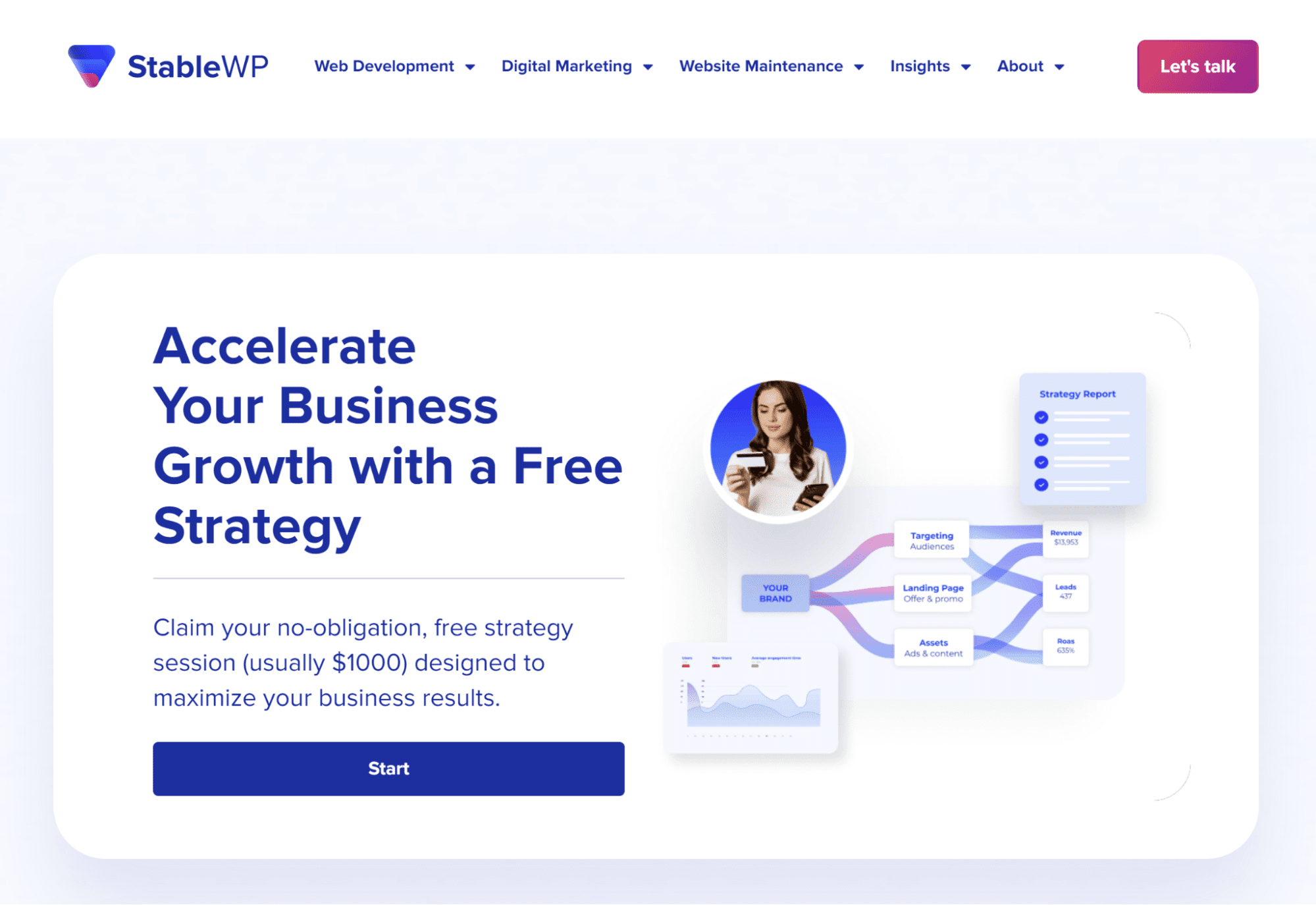
Lead magnets can take many forms, such as ebooks, webinars, checklists, templates, or any other resource that is relevant and valuable to your target audience.
The key to an effective lead magnet is ensuring it addresses a specific pain point or challenge and provides a solution or valuable information for potential customers.
The best lead magnets benefit both the customers and your business:
- They are specific and solve real problems;
- They demonstrate your unique value proposition;
- They are instantly accessible and easy to digest.
Capture leads with an engaging quiz funnel
Quiz funnels are a highly effective lead generation strategy for small businesses. Quizzes provide a personalized and interactive experience that helps increase conversions and close rates. They work by asking a series of questions to pre-qualify and segment leads which ultimately helps you convert them into customers.
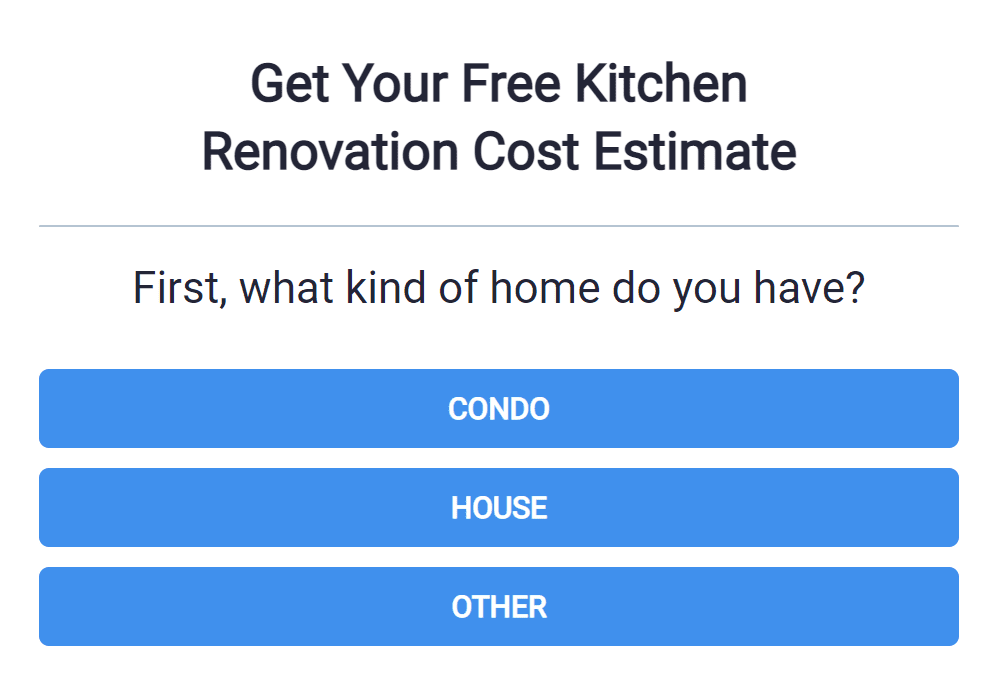
Using quiz funnels has several benefits for small businesses:
- Increased engagement: Quiz funnels are interactive and engaging, which means that visitors are more likely to participate and stick around for longer.
- Better lead quality: By asking questions that help qualify leads, businesses can determine which leads are most likely to convert into customers.
- Increased lead volume: Quiz funnels can help businesses generate more leads by offering a lead magnet, such as an eBook or whitepaper, in exchange for completing the quiz.
- Better lead nurturing: Quiz funnels can provide valuable information about leads, such as their preferences, interests and pain points, which can be used to personalize and improve lead nurturing efforts.
- Increased closing rate: By providing a more personalized experience and better lead qualification, quiz funnels can help increase the closing rate and generate more sales.
Here’s how to create an effective quiz funnel for your website:
- Create a landing page optimized for conversions;
- Ask a set of relevant questions suitable for audience segmentation;
- Drive traffic to your quiz page using SEO, paid advertising and/or social media;
- Offer a personalized product or service recommendation or a free quote.
We’ve seen the conversion rate increase by 40-60% when using quiz funnels.
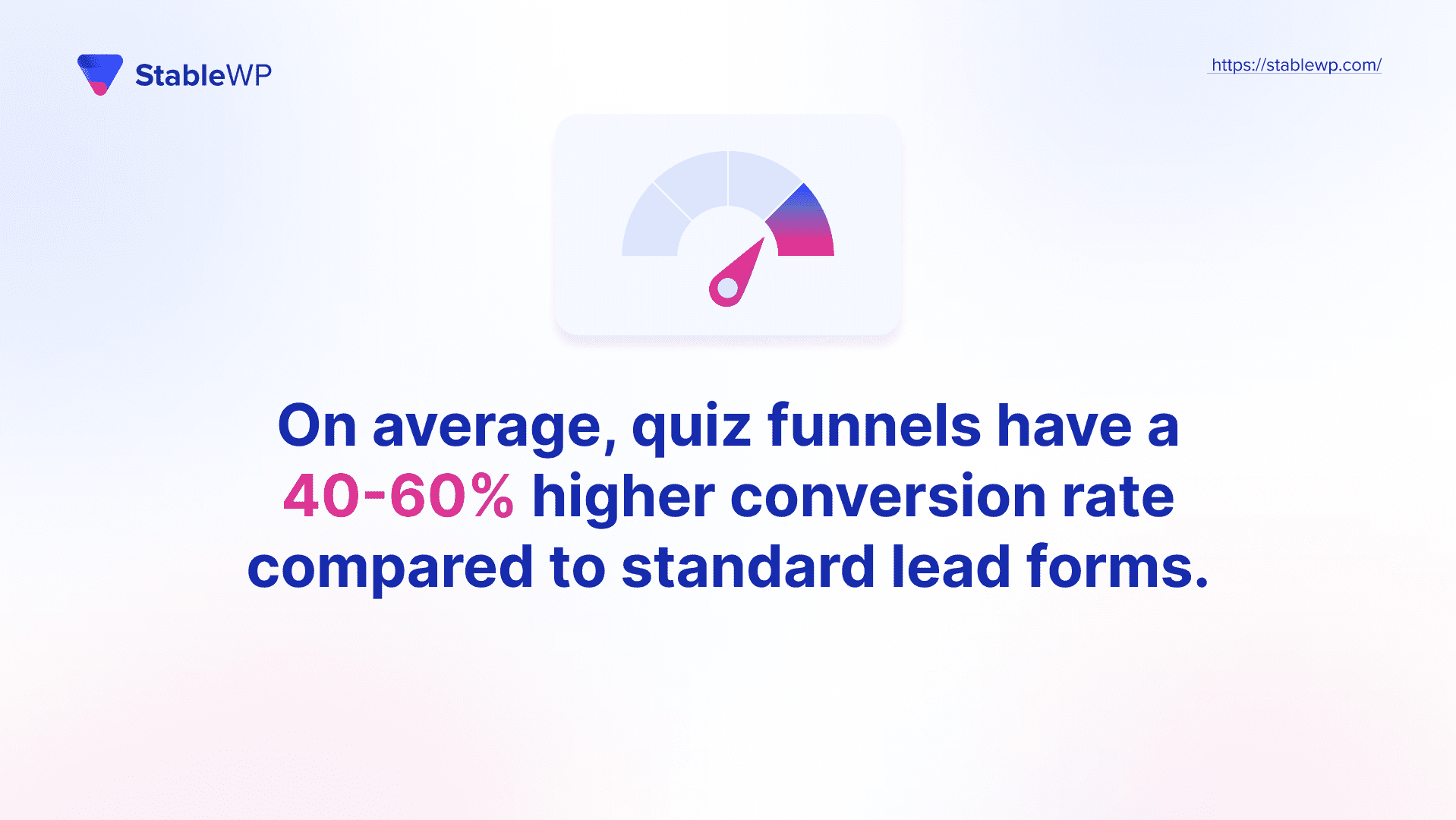
Use a dedicated landing page
Create dedicated landing pages optimized for conversion for your lead magnet. A specially designed landing page will help maximize your chance of converting visitors into leads.
An optimized landing page should have the following elements:
- A clear and compelling value proposition: The headline and subheadings should clearly communicate the main benefits and offers of the landing page.
- A strong and clear call-to-action (CTA): The CTA should be prominently displayed and tell visitors exactly what they need to do to get the lead magnet, such as “Download now” or “Sign up.”
- A simple and clean design: The landing page should have a clean and distraction-free design that focuses the visitor’s attention on the main offer.
- Relevant and compelling visuals: Use high-quality images or videos that reinforce the value proposition and help explain the offer.
- A form to capture contact information: The form should be short, simple and easy to fill out and only ask for the minimum necessary information.
- Mobile-responsive design: The landing page should be optimized for mobile devices and responsive to different screen sizes.
- A fast load time: The landing page should load quickly and not be bogged down by heavy images or videos.
Having an optimized landing page is a crucial step in converting website traffic into leads. A well-designed landing page can help increase the conversion rate and generate more leads, ultimately growing their customer base and achieving long-term success.
To maximize your conversion rate, it’s important to optimize your landing pages.
Analyze your current conversion rate using Google Analytics. You can also monitor user behaviour using heatmaps and session recording to identify issues and opportunities to improve the user experience and your conversion rate.
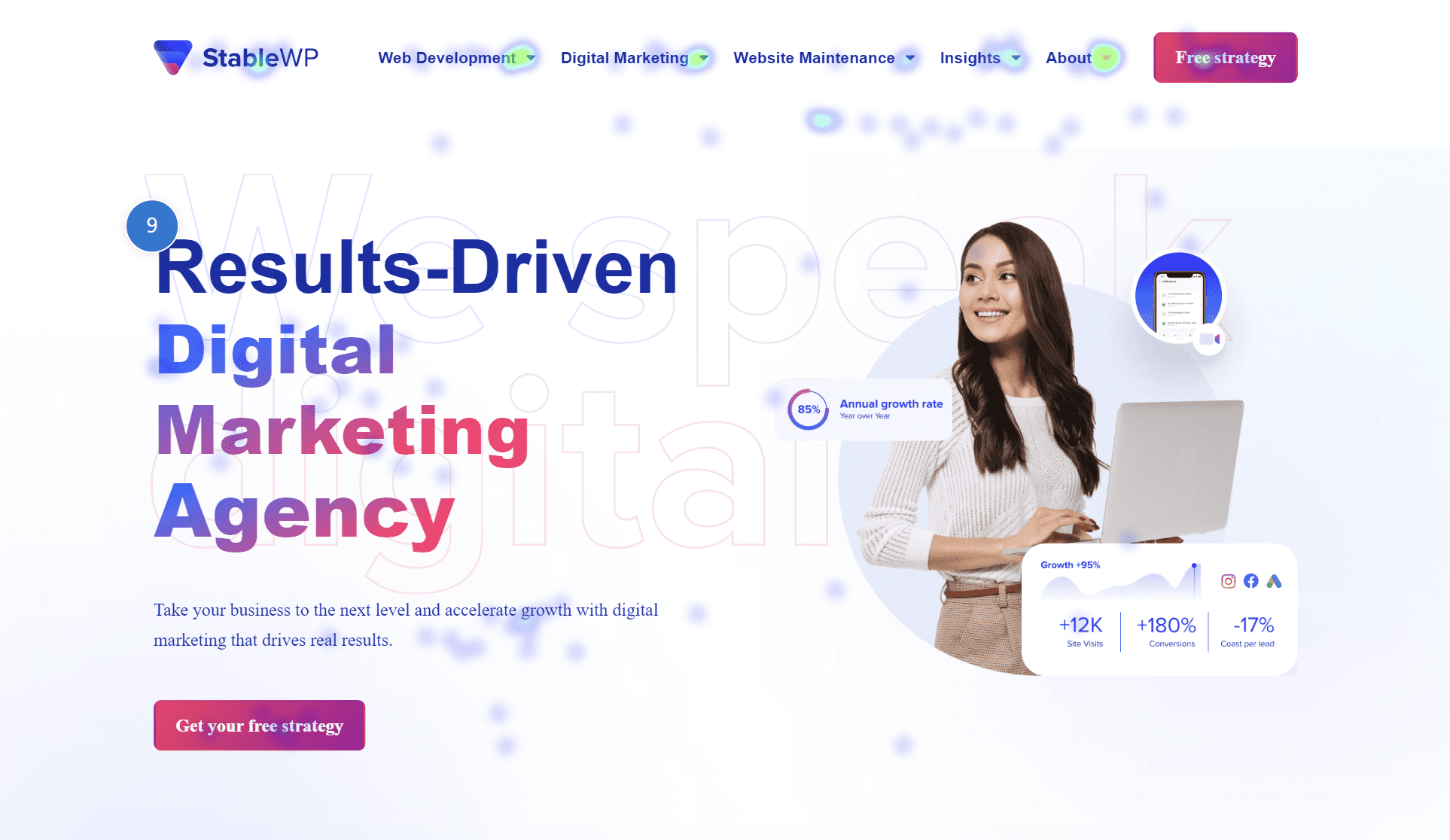
Before committing to any long-term changes, run A/B landing page tests to experiment with different visuals, CTAs, page design, unique selling points and more.
On average, we’ve seen up to 30% lift in conversion rate after running landing page experiments. So, making even minor changes can go a long way.
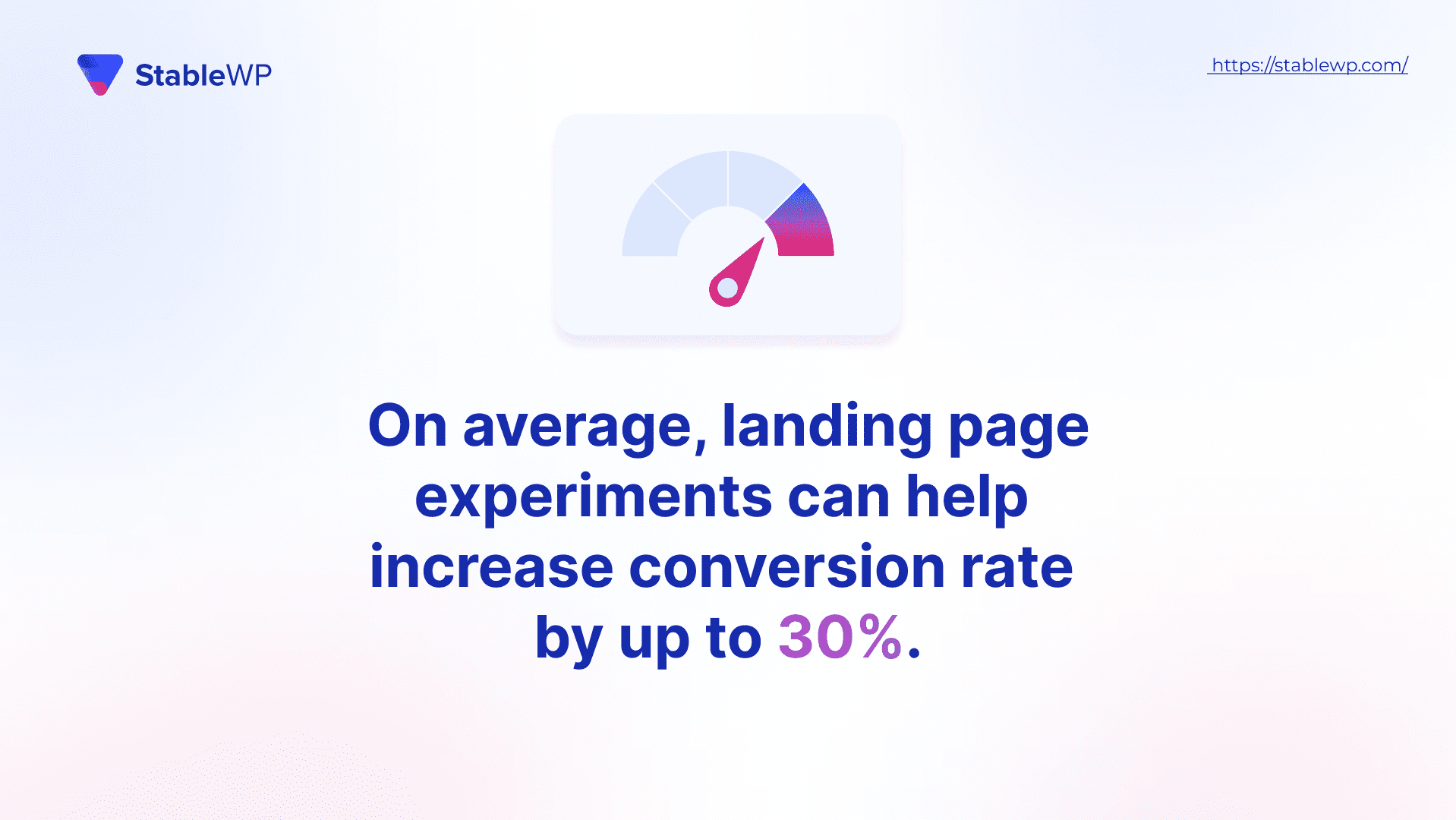
Step 4: Convert leads into sales
Converting leads into paying customers is the final and crucial step in the lead generation process for small businesses. This step involves nurturing leads, building relationships and trust, and finally, closing the sale.
Here are a few tactics you can use to convert leads into customers:
- Personalized email marketing – Sending targeted and personalized emails to leads can help build relationships and increase the chances of a sale.
- Lead nurturing – Regularly reaching out to leads and providing them with valuable information helps build trust and keeps them engaged with your business.
- Sales calls or demos – Setting up sales calls or demos can provide an opportunity to answer any questions and demonstrate the value of your product or service.
- Special offers – Incentivizing leads with special offers or discounts can encourage them to become customers.
By consistently following up with leads and providing value, small businesses can increase their chances of converting leads into paying customers.
Automate lead nurturing with email sequences
Automated email marketing is an efficient and effective way to nurture and close leads. By using pre-written and triggered emails, small businesses can consistently and promptly communicate with leads, building relationships and trust over time.
The goal of automated email marketing is to move leads through the sales funnel, from awareness to consideration, to decision. It can also help with lead segmentation, allowing for tailored and personalized messaging to specific groups of leads based on their interests and behaviour.
Examples of automated email campaigns for lead nurturing include:
- Welcome series – Introducing new leads to your business and setting expectations for future communications.
- Education series – Providing valuable information and resources to help educate leads about your products or services.
- Follow-up series – Regularly following up with leads to keep them engaged and warm up to a potential sale.
- Nurture series – Providing additional resources and offers to leads who have shown an interest but may not be ready to purchase.
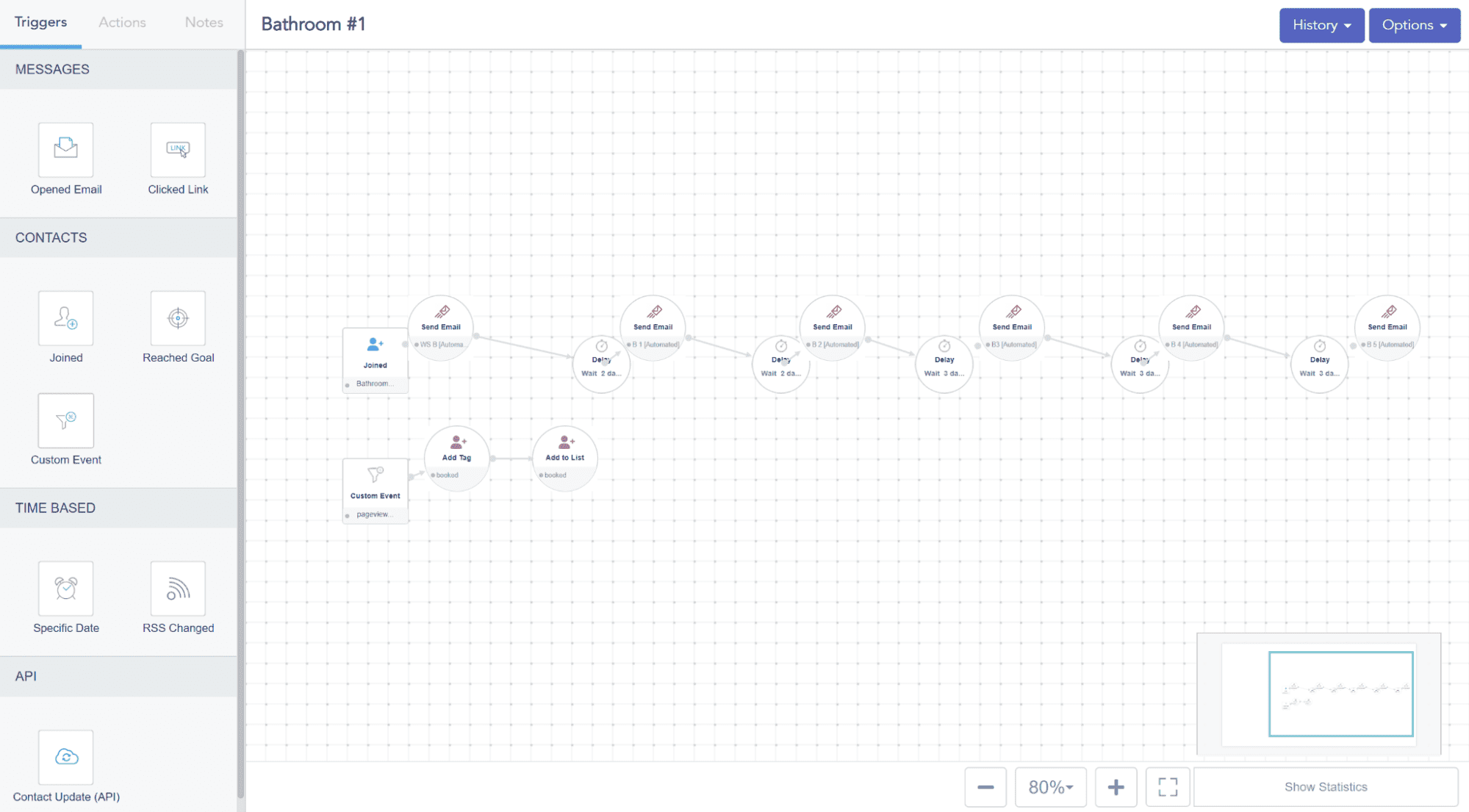
Automated email marketing is especially important when you start scaling up with hundreds of leads using previously described tactics.
In that scenario, reaching out to every single lead manually becomes too much, especially if you don’t have a well-staffed sales team. Email marketing can help you welcome new leads, provide them with the right resources (e-book, quote, whitepaper, etc.) and follow up to stay in touch, all on auto-pilot.
Email marketing can act as an extension (and sometimes even as a replacement) of your sales team.
Step 5: Supplement your lead generation with cold outreach
Cold outreach can help supplement the lead generation strategies by providing a direct line of communication with potential customers. This involves reaching out to prospects who have not previously interacted with your business and introducing your products or services.
Cold outreach can be done through various channels, such as email, phone, or social media, and can be an effective way to expand your reach and find new leads.
It’s important to personalize each outreach message, providing value and addressing the specific needs or pain points of the prospect.

To make the most of cold outreach, it is important to have a well-defined target audience, as well as a clear understanding of the products or services being offered. Having a solid understanding of your target audience will make it easier to create a messaging strategy that resonates with them.
The steps involved in cold outreach include:
- Identifying your target audience: Determine who your ideal customer is and create a target list of companies or individuals that fit your customer profile.
- Researching and personalizing your outreach: Research each target, gather information about their business and personalize your outreach message based on the information you find.
- Crafting a compelling message: Write a compelling message that addresses the target’s needs and highlights the benefits of your product or service.
- Choosing the right channel: Decide on the most appropriate channel for your outreach, such as email or cold calling.
- Measuring and refining your outreach: Track the results of your cold outreach efforts and refine your approach based on the results.
Cold outreach can be time-consuming, but it can also be an effective way to supplement other lead generation strategies and build relationships with potential customers.
The good thing about cold outreach is that, for the most part, you can do it at scale using outreach software that allows you to send automated emails to prospects. However, remember that your messaging needs to be personalized to avoid spam filters and negative replies.
Step 6: Raise awareness using social media
Raising awareness on social media can also play a crucial role in small business lead generation. Social media provides a platform to connect with potential customers and build relationships. A strong social media presence can attract new leads, engage with existing leads and drive them toward conversion.
Creating and posting engaging content on Instagram, TikTok, Twitter, Linkedin, and Facebook is an indispensable way to build a following and help your brand become more discoverable online.
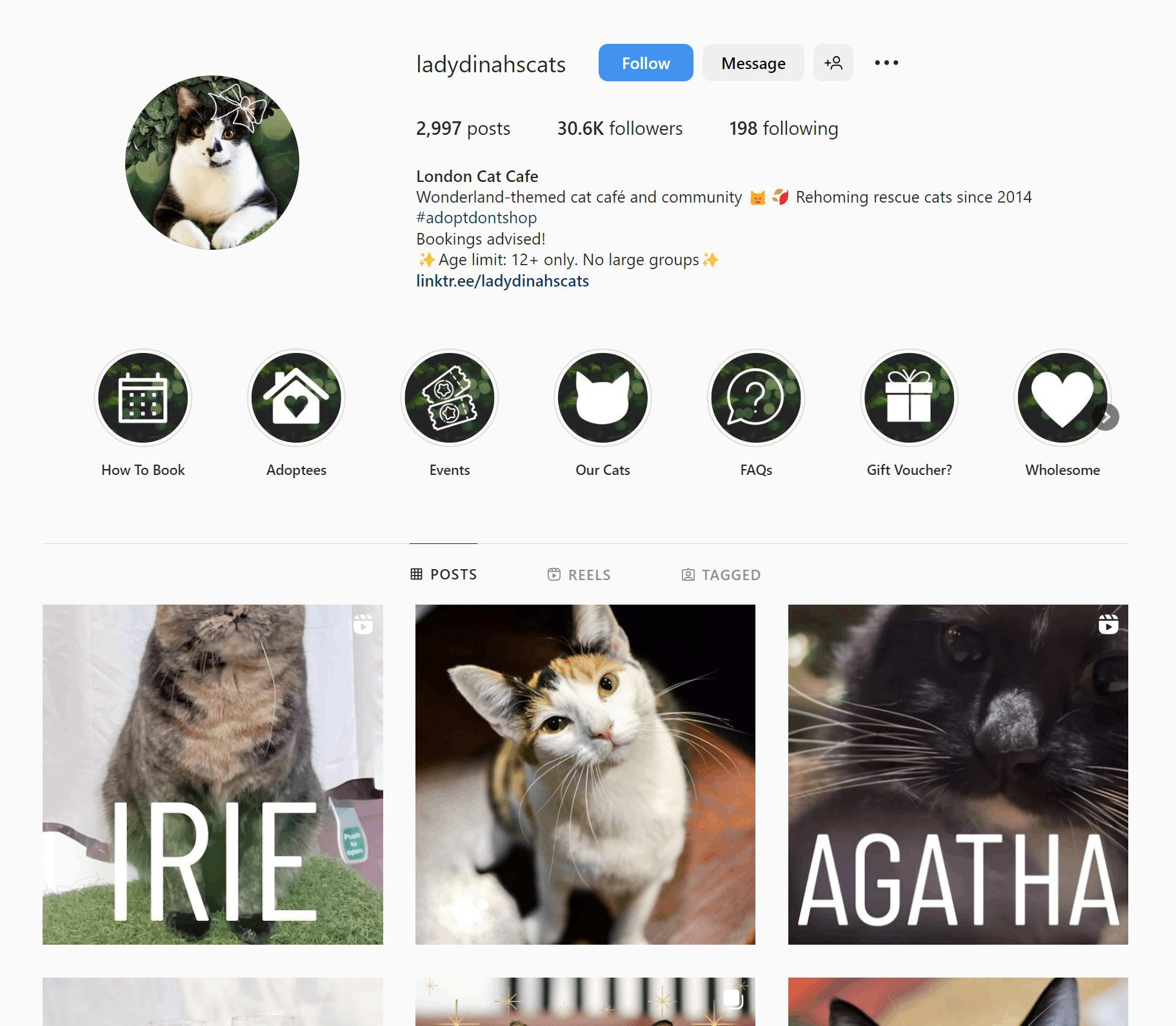
Here are a few ways to effectively use social media for lead generation:
- Define your target audience and identify which social media platforms they are active on.
- Develop a consistent brand voice and create content that resonates with your target audience.
- Share valuable content, such as blog posts and infographics, to educate and engage your followers.
- Encourage lead capture by including calls-to-action in your social media posts.
- Engage with your followers by responding to comments and messages and participating in online conversations related to your industry.
Start generating leads for your small business
Effective lead generation is one of the cornerstones of small business success in an increasingly competitive world. A comprehensive strategy that involves attracting the right traffic, converting that traffic into qualified leads, and nurturing those leads until they become paying customers is key.
By utilizing tactics such as paid advertising, SEO, content marketing, social media, email marketing, and cold outreach, you can create an omnichannel approach that will help you achieve your lead generation goals.
However, implementing these strategies effectively can be challenging, especially for small businesses with limited resources. That’s where we come in. As a digital marketing agency, we have the expertise, tools, and experience to help you generate leads effectively.
If you’re ready to take your lead generation efforts to the next level and grow your business, reach out to us. Our team is here to help you create a customized lead generation strategy that works for you.
Contact us today to schedule a consultation and start growing your customer base.
